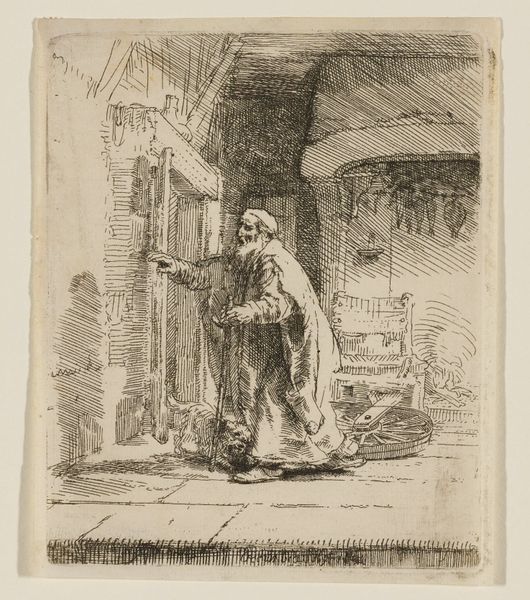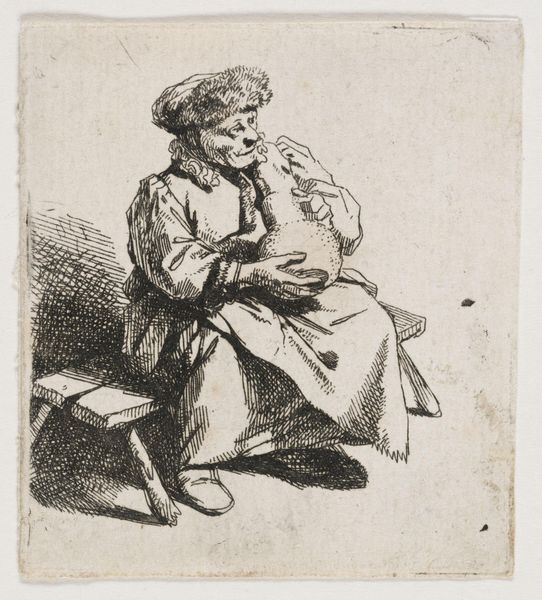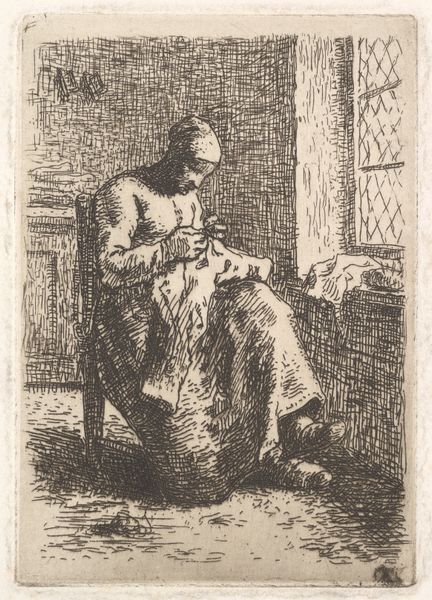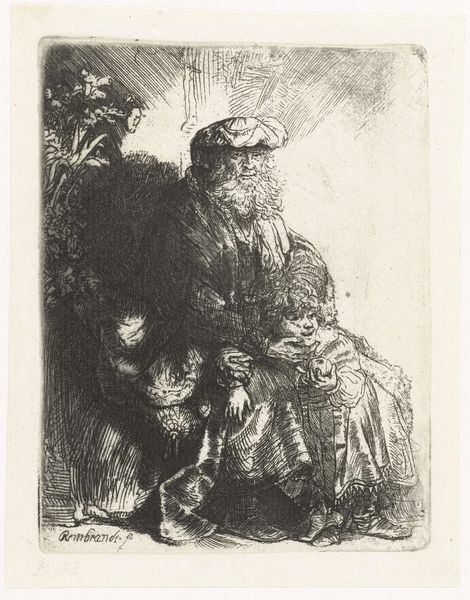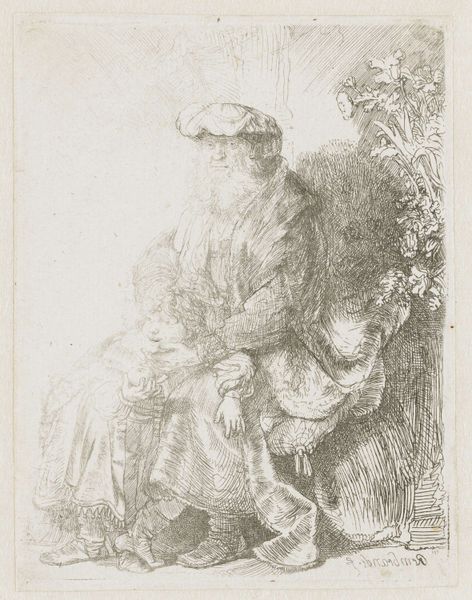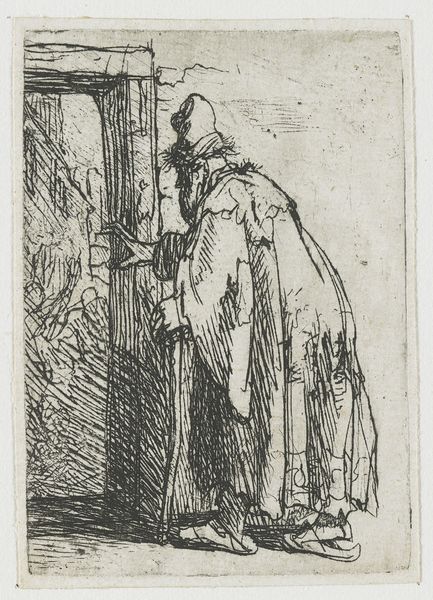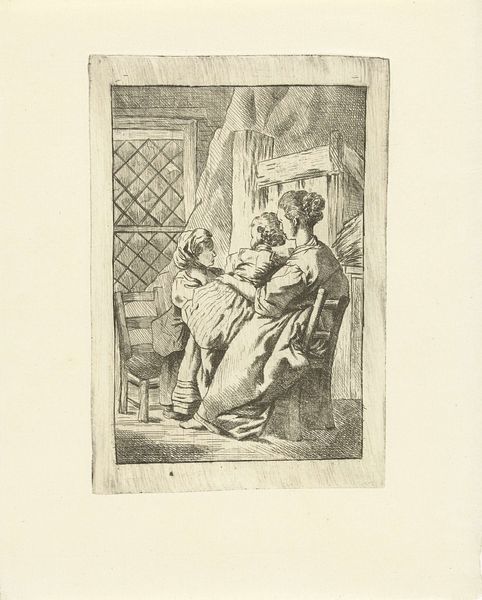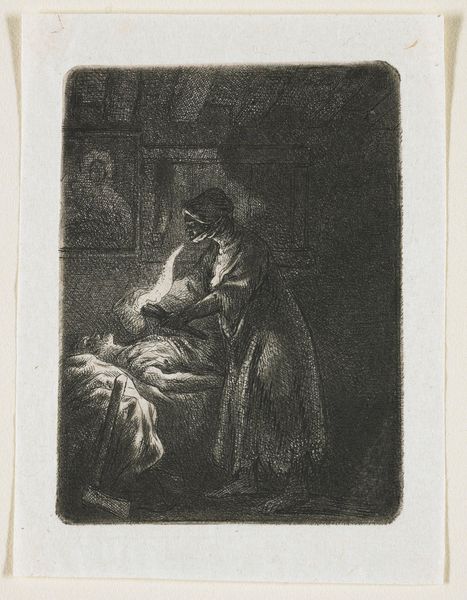
Dimensions: 109 × 76 mm (image/plate); 119 × 92 mm (sheet)
Copyright: Public Domain
Curator: Today, we’re looking at Jean-François Millet’s etching, “A Woman Sewing,” created in 1855. Editor: My initial impression is one of quiet diligence. There’s a very subtle and humble beauty to this tiny image; it feels both intimate and monumental in its portrayal of everyday labor. Curator: Millet, positioned as a key figure in the Realist movement, consistently focused on rural life and the working class. This etching exemplifies his commitment to depicting the dignity and, indeed, the realities, of labor often ignored by the mainstream art world of the time. Editor: Absolutely, and it's worth noting this wasn't an oil painting, but an etching - a print. The deliberate choice to use etching allowed for reproducibility, and reaching a broader audience beyond the wealthy elite. Also the tactile nature of needlework translated effectively via etching, allowing Millet to spotlight the work’s physical process and material reality. Curator: It’s interesting to consider how this kind of representation of a woman engaged in needlework functions within the broader art market of 19th-century France. Was it intended to inspire empathy, to highlight societal inequities, or something else entirely? Editor: I would say that the lack of idealization speaks volumes. This isn’t a romanticized view of peasant life, but something far more direct. Notice the worn textures conveyed through the ink. You almost feel the weight of the fabric in her hands. The act of sewing also links to domestic economies, raising a very important question about who is being fed and clothed as a result of that labor. Curator: I think what resonates across the ages is that unflinching depiction of quotidian reality—stripped bare, if you will—free from the pomp and artifice we might see in academic painting of that period. It's about bearing witness, wouldn't you agree? Editor: Indeed. It's easy to overlook such 'ordinary' scenes but perhaps the greatness here resides precisely in drawing our attention to the value of those essential, but unglamorous, parts of everyday experience. Curator: A profound point, expertly framed. Editor: I agree. And that's all we have time for on today’s audio guide.
Comments
No comments
Be the first to comment and join the conversation on the ultimate creative platform.
